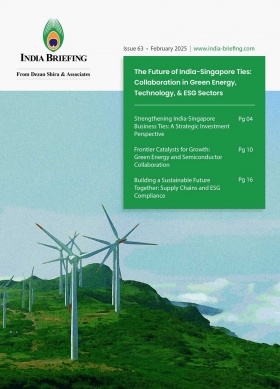Reviewing Legal Mandates and Workplace Policy on Maternity Benefits in India
India has expanded the scope of maternity benefits, including for contractual employees and women with over two children. The latest move has implications for HR policies, business compliance, and labor costs. Here’s what companies operating in India need to know.
In May 2025, the Supreme Court of India (SC) delivered an important ruling clarifying key points of the Maternity Benefit Act, 1961, and its 2017 Amendment. The apex court delivered the decision to extend maternity benefits to more types of jobs and placed stronger duties on employers in both government and private workplaces to support women during and after pregnancy.
The ruling comes in the case of K. Umadevi vs. Government of Tamil Nadu, reversing an earlier decision by the Madras High Court.
Supreme Court ruling on maternity benefit
The SC judgment issued on May 23, 2025, clarifies that the Maternity Benefit (Amendment) Act, 2017, does not bar women with more than two children from availing maternity leave. It only limits the duration of maternity leave to 26 weeks for women with fewer than two children and 12 weeks for those with more. It highlighted that no ceiling exists on the number of children for determining eligibility.
The SC emphasized that such restrictions, if enforced in public policy or human resource (HR) frameworks, would undermine the reproductive rights of women as recognized under constitutional and international human rights law. The court explicitly stated that “maternity leave is integral to maternity benefits and the right to dignity, equality, health, and privacy.”
The latest SC ruling concerned a state government schoolteacher in Tamil Nadu who had applied for maternity leave during her third pregnancy. The Madras High Court had earlier denied the teacher’s request on the grounds that Tamil Nadu’s state policy, framed with the aim of population control, did not allow maternity leave for the birth of a third child.
Previous SC ruling on maternity benefits for women contract workers in India
In another similar case, Dr. Kavita Yadav v. Ministry of Health and Family Welfare, the SC ruled in favor of a contractual employee who was denied maternity benefits extending beyond her contract term. The court stated that maternity benefits are not to be restricted by the tenure of employment contracts. The benefits extend through the period for which a woman would have been eligible, even after contract expiration.
Section 5(2) of India’s Maternity Benefit Act, 1961, mandates benefits for women who have worked 180 days in the preceding 12 months, without distinguishing between contract and permanent staff. The court further emphasized that Section 12 of the Act prohibits employers from terminating an employee during the maternity period. In this context, attempting to restrict benefits on account of contract terms is not only discriminatory but unlawful.
Understanding legal provisions governing maternity benefits for women in India
Maternity Benefit Act, 1961
India’s maternity leave regime is governed by the Maternity Benefit Act, 1961, as amended in 2017, which sets the legal standards for paid leave, workplace protections, and postnatal support. One of the major amendments in 2017 was the extension of paid maternity leave from 12 to 26 weeks for women with fewer than two children. Of this, up to eight weeks can be availed before delivery. For mothers with two or more children, the law allows 12 weeks of leave, with up to six weeks permitted as pre-delivery leave.
The legislation also introduced entitlements for adoptive and commissioning mothers, granting them 12 weeks of maternity leave starting from the date the child is handed over. Beyond leave entitlements, the act requires employers to provide nursing breaks to female employees following childbirth. These breaks are intended to support breastfeeding and allow mothers to care for their infants during working hours, an often overlooked but essential component of maternal support.
The act also mandates the provision of crèche facilities for establishments employing 50 or more individuals. Women employees are allowed up to four visits to the crèche each day, including rest intervals.
Extending maternity benefits for work-from-home
Post-maternity work-from-home arrangements may also be permitted based on mutual agreement between the employer and employee, offering flexibility to manage professional responsibilities alongside childcare needs. Employers are legally required to inform all female employees about their maternity entitlements in writing at the time of joining, whether through printed material or electronic means.
To ensure enforcement, the act prescribes penalties for violations. These include imprisonment for up to one year and fines up to INR 6,000 (US$70), particularly in cases where an employer unlawfully denies benefits, terminates an employee during maternity leave, or fails to provide required information.
Employees’ State Insurance (ESI) Act, 1948
Complementing these protections, the Employees’ State Insurance (ESI) Act, 1948, provides financial assistance and medical benefits to women workers registered under the ESI scheme. For eligible employees, the act ensures access to maternity benefits such as paid leave during confinement and medical care, including outpatient and inpatient services related to pregnancy and childbirth. These benefits are intended to help reduce out-of-pocket expenses and offer crucial financial support during the maternity period, particularly for workers in the formal sector who may otherwise lack access to extended paid leave.
Regulatory obligations for employers on maternity leave compliance
Policy compliance and legal risk mitigation
With the court’s broad interpretation of eligibility, companies and HR teams are advised to ensure maternity policies are explicitly inclusive and in alignment with the Maternity Benefit Act, 1961, Code on Social Security, 2020, and ESI Act, 1948. Failing to comply not only results in legal penalties but also damages employer reputation.
Cost implications for SMEs
Employers must bear full financial responsibilities for maternity benefits, including salary and facilities like crèches. For small and medium enterprises (SMEs), this could represent a significant cost burden, particularly when dealing with multiple employees on extended leave simultaneously.
Employee morale and retention
One must note that incorporating robust maternity policies can lead to higher employee satisfaction, lower attrition, and stronger employer branding. Companies that support female employees through these transitions tend to attract a more diverse and skilled talent pool.
Operational adjustments and temporary hiring
Extended leaves may necessitate temporary staffing or redistribution of responsibilities. Organizations can proactively build continuity plans and flexible workforce models to mitigate productivity loss.
READ MORE: Leave Management in India: Key Considerations for Employers and Employees
In brief
India’s approach is increasingly aligning with international labor standards under International Labor Organization (ILO) conventions, and this judicial decision is one of harmonizing economic policy with human rights. Companies with global footprints or ESG (Environmental, Social, Governance) mandates must be particularly careful in ensuring their HR practices reflect this progressive legal framework.
(US$1 = INR 85.4)
About Us
India Briefing is one of five regional publications under the Asia Briefing brand. It is supported by Dezan Shira & Associates, a pan-Asia, multi-disciplinary professional services firm that assists foreign investors throughout Asia, including through offices in Delhi, Mumbai, and Bengaluru in India. Dezan Shira & Associates also maintains offices or has alliance partners assisting foreign investors in China, Hong Kong SAR, Vietnam, Indonesia, Singapore, Malaysia, Mongolia, Dubai (UAE), Japan, South Korea, Nepal, The Philippines, Sri Lanka, Thailand, Italy, Germany, Bangladesh, Australia, United States, and United Kingdom and Ireland.
For a complimentary subscription to India Briefing’s content products, please click here. For support with establishing a business in India or for assistance in analyzing and entering markets, please contact the firm at india@dezshira.com or visit our website at www.dezshira.com.
- Previous Article India Reinstates RoDTEP Benefits for Exporters Effective June 1, 2025
- Next Article US Appeals Court Reinstates Trump Tariffs: Key Updates for India








